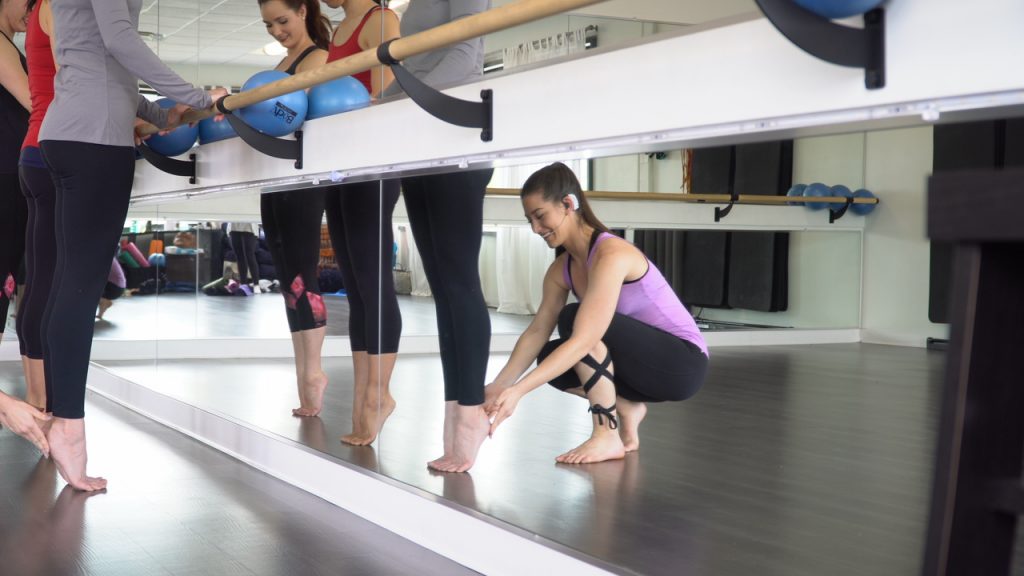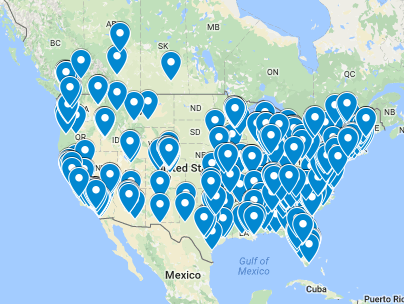Not too long ago it seemed like there were only a handful of barre certification programs available to help you get certified to teach barre. Nowadays, the landscape is much more vast, with an abundance of options online and off. How do you know which ones are worth your time and money and who is just hoping to make a quick buck?
We spoke with Lisa Juliet, Regional Director at Barre Certification, who filled us in on what to look out for. When you’re researching options, she recommends taking these points into consideration.
How many teaching hours does the barre training program provide?
Though you may have attended a weekend workshop, are you really getting the adequate training you need to feel confident teaching in such a short period of time? Lisa points out that it’s unlikely that you could be adequately trained in only one or two days. “There is a lot of course material to go through, to study and to practice to help you feel prepared to teach.”
You should know anatomy and physiology of the upper body, lower body, and core as well as the proper teaching corrections and modifications to emphasize safety. Most of all you should know the “why” of all the exercises we do in barre. Your training should also cover how to properly count to music and how to properly demonstrate each exercise with proper technique.
Additionally, the training should provide different exercise variations for students depending on their ability level, especially for those with injuries.
Are they preparing you to identify any situation that might come up during teaching?
Specific needs will differ from student to student, so knowing how to make proper suggestions based on their unique situation is key to making sure no one gets injured. Ultimately, this will help you build trust among your clientele and you will feel more prepared to handle a wider range of situations.
Will there be additional resources available to you during and after you complete your training?
Look out for class designs, music suggestions and ongoing support. Do these resources come with the program or are they expecting you to pay an additional fee?
Will you be left to your own devices once you become certified or is there a support network of other instructors and staff who you can lean on to help you once you start teaching?
Is this an actual certification or just a certificate of completion?
Does your program provide everything you need to receive your certification or will you simply receive a certificate of completion? There is a big difference between the two. Many barre certification programs do not require any sort of assessment or evaluation before handing out a certificate of completion; the only requirement is that you simply show up. The catch here is that a certification, by definition, should be given only to those who have demonstrated proficiency in a given area!
Are there any hidden fees?
If a training program requires you to submit or attend an exam, make sure there are no additional fees associated with this. Many programs will “get you in the door” with the training materials but charge extra for shipping, to send in a video, receive individualized feedback or obtain an actual certification. A great program will have all of these things included in one price!
Is the correct terminology being taught?
As you may have noticed, some studios, particularly franchises, have their own branded lingo for exercises and poses. Lisa suggests looking for barre certification programs that refer to terms that are universally accepted.
Branded lingo is used as a quality control tool and is a way to protect the intellectual property of a founder or company. Barre does not belong to any one “founder”. Though many credit Lotte Berk for introducing Barre as a workout to North America, the dance terminology and foundational movements have been around for hundreds of years.
The use of created names for these positions essentially eliminates the need for knowledge of ballet terminology and definitions; this isolates instructors from being able to teach to a broader audience. Any instructor training should not only give you the name, pronunciation, and definition for terms used, they should also explain the reason it is used and its origin.
Is the training widely recognized?
The fitness industry is full of courses and events that provide just enough material to give you the continuing education credits needed. These credits, however, are a great way to compare quality, depth and length of training as recognized by leading fitness organizations. The approval process through organizations like ISSA and ACE are extensive. If a program has a significant amount of credits from multiple organizations, you can rest easy knowing that it has met professional standards within the industry. Many facilities will not recognize training that has not been approved through these organizations.









Hi,
How can I get a barre teacher certification?
Are there physical requirements for a barre teacher?